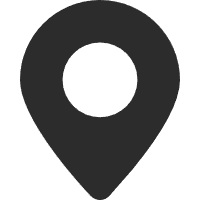With the increasing number of Marine fishery activities, the management and classification of fishing boats have become increasingly important. According to the relevant regulations of our country, fishing boats are classified into different categories. Among them, Class II, Class III and Class IV fishing boats have attracted much attention due to differences in tonnage, usage and other aspects.
Class II fishing boats: Medium-sized recreational fishing platforms
Class II fishing boats are mainly suitable for recreational fishing activities in nearshore areas and usually have a certain degree of comfort and safety. The total tonnage of this type of fishing boat generally does not exceed 200 tons, and the length is between 18 meters and 24 meters. Due to its moderate size, the second-class fishing boat can carry a larger number of passengers and offer a more comfortable leisure experience. In addition, this type of fishing boat is also equipped with relatively complete navigation, communication and life-saving devices, ensuring the safety of navigation.
2. Three types of fishing boats: Small recreational fishing tools
The three types of fishing boats mainly serve small-scale recreational fishing activities in the near sea. They are usually of small tonnage, with a total tonnage not exceeding 100 tons and a length ranging from 12 to 18 meters. This type of fishing boat has a simple structure and flexible operation, making it suitable for operations in nearshore waters. Due to its small size, the passenger capacity of the three types of fishing boats is relatively limited. However, its portability and flexibility make it an ideal choice for many small-scale recreational fishing activities. In addition, the construction cost of this type of fishing boat is relatively low, and the maintenance and operation expenses are also more economical.
3. Four types of fishing boats: Miniature auxiliary tools for recreational fishing
The fourth type of fishing boats are mainly used for auxiliary work in small-scale recreational fishing activities in the near sea, with a total tonnage not exceeding 50 tons and a length of less than 10 meters. This type of fishing boat is compact in size and easy to operate, making it suitable for operations in shallow waters near the sea. Due to its small volume and tonnage, the passenger capacity of Class 4 fishing boats is very limited, and they are mainly used for transporting fishermen, fishing gear and a small amount of goods. The construction cost of this type of fishing boat is low, and the maintenance and operation expenses are also relatively low, making it very suitable for the auxiliary needs of small-scale recreational fishing activities.
4. Management regulations and requirements
To ensure the safe operation of fishing boats and environmental protection, the state has formulated corresponding management regulations and requirements for different types of fishing boats. For instance, Class II, Class III and Class IV fishing boats all need to obtain a fishery vessel inspection certificate and a fishery catch license, and undergo regular safety inspections and maintenance. Meanwhile, the state has also imposed strict regulations on noise emissions and pollutant emissions of different types of fishing boats to protect the Marine ecological environment.
5. Development Trends and Prospects
With the development of Marine recreational fisheries, the demand for different types of fishing boats is also constantly increasing. In the future, China will continue to strengthen the classification management of fishing boats, enhancing their safety and environmental protection performance. Meanwhile, with the advancement of technology, new types of fishing boats will continue to emerge, bringing new development opportunities to Marine recreational fishery. Whether it is Class II, Class III or Class IV fishing boats, they will all develop in a more efficient, environmentally friendly and comfortable direction to meet the needs of fishermen and tourists.
In conclusion, there are significant differences among Class II, Class III and Class IV fishing boats in terms of tonnage, usage and passenger capacity, each with its own characteristics and applicable scope. Understanding these differences helps us better choose and use the right fishing boats, and enjoy safe and comfortable Marine recreational fishing activities.

louise.zhu@lanyuboat.com
emily.qi@lanyuboat.com
patrick@lanyuboat.com
+ 86-15641741111 / + 86-18340626668
+ 86-13314077211 / + 86-18242682001






